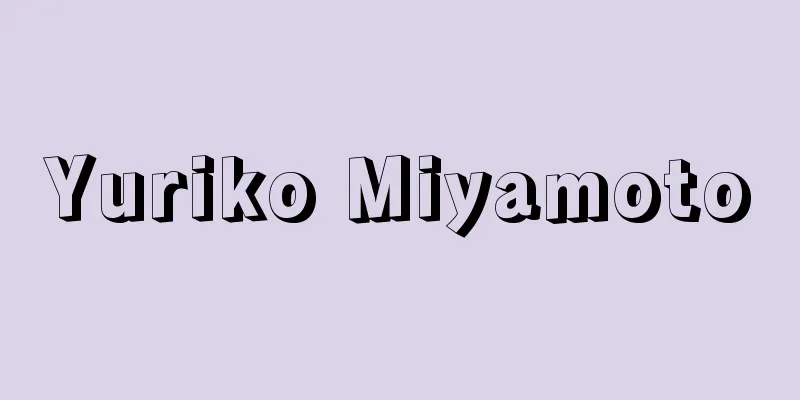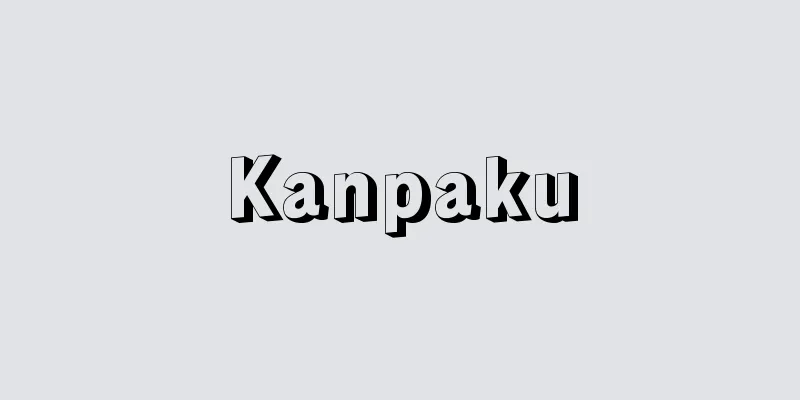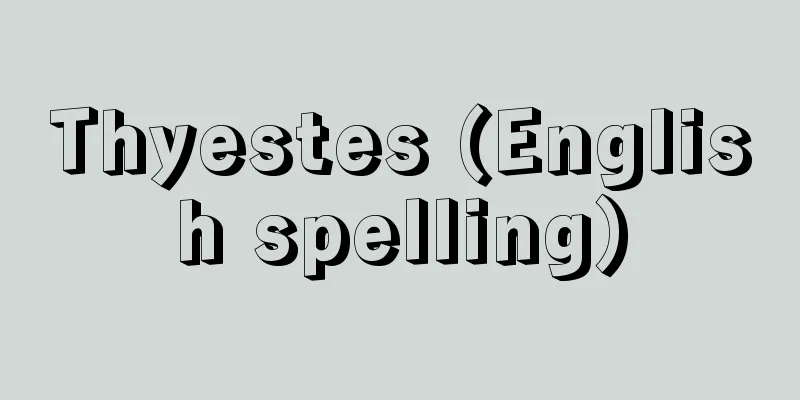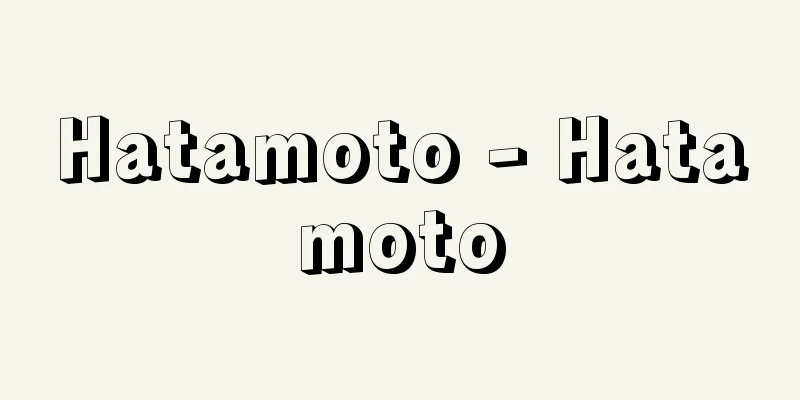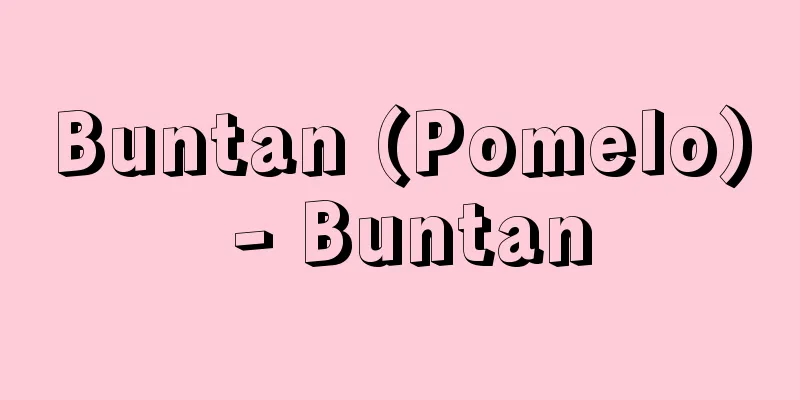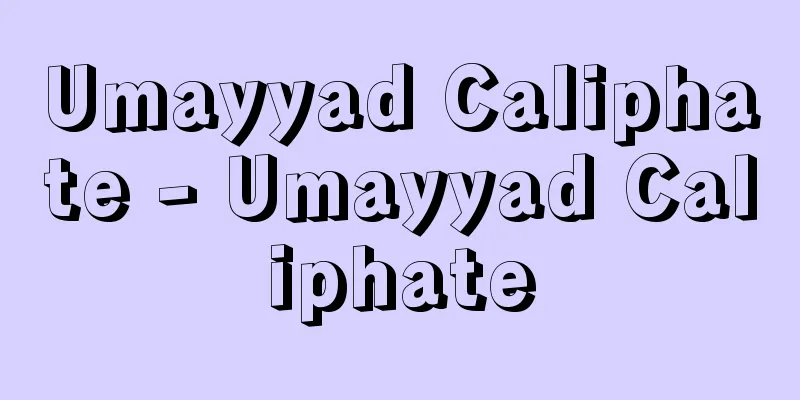National Health Insurance
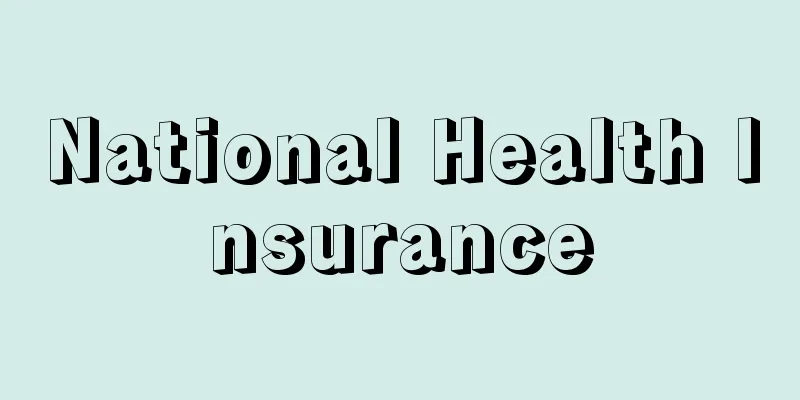
|
Medical insurance for self-employed people and others who are not covered by employee insurance such as health insurance (Kenpo). It is abbreviated as Kokuho. [Yasuhiko Yamazaki November 13, 2020] HistoryAs the Sino-Japanese War expanded, attention was focused on the role of medical insurance as a measure to keep people healthy and soldiers healthy under the wartime system, and in 1938 (Showa 13), when the former Ministry of Health and Welfare was established, the National Health Insurance Act was enacted, which was based on a voluntary establishment, voluntary enrollment, and association system, targeting residents of farming, mountain, and fishing villages and self-employed people in cities. After World War II, in order to rebuild the NHI system, a revision was made in 1948 (Showa 23) to change the system to a voluntary establishment, compulsory enrollment system, with municipal public management as the principle. In 1958, a new National Health Insurance Act was enacted, which made it mandatory for all municipalities to implement the NHI system, and with its full implementation in 1961, universal health insurance was realized. The scope of medical benefits was the same as that of health insurance, and the initial self-payment rate was 50%, the same as for dependents of health insurance. During the period of rapid economic growth, improvements were made to benefits, with the head of the household paying 30% of the cost being fully implemented in 1963 and the members of the household paying 30% in 1968, and the high-cost medical care payment system was implemented from 1973 to 1975. After that, the NHI finances faced a crisis due to free medical care for the elderly, the aging of the population, and economic stagnation, but after the establishment of the Health Care Act for the Elderly in 1982 and the introduction of a medical care system for retirees in 1984, adjustments between systems were strengthened through the introduction of an elderly medical care system through amendments in 2006 (Heisei 18). [Yasuhiko Yamazaki November 13, 2020] Amendments in 2015In 2015, the largest reform since the establishment of the NHI system was carried out, which strengthened the financial base by expanding public funds, asked prefectures to play a new role in financial management, and aimed to stabilize the NHI system. In order to strengthen the financial base, the insurer support system has been expanded since FY2015 as a measure to support low-income earners, and from FY2018, the insurer effort support system has been established, the national government's fiscal adjustment function has been strengthened, measures have been taken to address increases in medical expenses and burdens due to factors beyond the fault of local governments, support has been provided for efforts to rationalize medical expenses, and financial risks have been dispersed and reduced through the fiscal stabilization fund. Regarding financial management, prefectures have been responsible for the financial management of NHI since fiscal 2018, and they play a central role in the management of NHI, such as ensuring stable financial management and efficient business operations. Specifically, prefectures pay municipalities the full amount of the expenses incurred by them for insurance benefits, collect NHI business fee payments from municipalities, and manage the overall financial balance. Furthermore, prefectures set unified national health insurance management policies within the prefecture, and promote the efficiency and expansion of municipal affairs. Meanwhile, municipalities continue to be responsible for detailed local operations such as collecting insurance premiums, managing qualifications and deciding on insurance benefits, and running health care projects. [Yasuhiko Yamazaki November 13, 2020] Insurer and insured personIn principle, the insurers (operating bodies) of the National Health Insurance are prefectures and municipalities (including special wards), but there are also National Health Insurance Associations (Kokuho Associations) established nationwide or by prefecture for groups of 300 or more people engaged in the same business or occupation. The main types of occupations are doctors, dentists, pharmacists, food retailers, civil engineering and construction, barbers and beauticians, and lawyers, but in principle, new associations are not allowed to be established due to consideration of the impact on the National Health Insurance of prefectures and municipalities. Insured persons are people who have an address within the prefecture, excluding insured persons and dependents under employee insurance, people who belong to households protected under the Public Assistance Act, insured persons under the National Health Insurance Association, and insured persons under the Medical Care System for the Elderly. There is no distinction between insured persons and dependents when it comes to those covered by the National Health Insurance, and both the head of the household and its members are insured persons. [Yasuhiko Yamazaki November 13, 2020] Insurance benefitsMedical benefits(1) Medical treatment benefits The self-payment rate for both insured persons and dependents is 20% for those aged 70 to 75 (30% for those with income equivalent to that of working people), 30% for those after entering compulsory education and under 70 years old, and 20% for those before entering compulsory education. (2) Dietary treatment costs during hospitalization The cost is set at 460 yen per meal, taking into account the food expenses for an average household (cost of ingredients + cooking costs), but there are reductions available for patients with designated intractable diseases and low-income earners. (3) Living expenses during hospitalization In order to achieve fairness in the burden of medical care and nursing care, and between hospitalization and home care, persons aged 65 or older who are admitted to a medical bed are required to pay a self-payment. The standard amount is set taking into consideration the average household's food and accommodation expenses, etc., and is 1,750 yen per day. However, there are reductions available for patients with designated intractable diseases and low-income earners, as well as reductions that can make the burden the same as the dietary treatment expenses during hospitalization depending on the condition of the illness, etc. (4) Home nursing care expenses/family home nursing care expenses The self-payment rate is the same as for general medical care. (5) Non-insured combined medical expenses With regard to selected medical treatments such as differential-charge beds, which are selected and agreed to by the patient, evaluated medical treatments such as advanced medical treatments that are evaluated for the future introduction of insurance, and patient-proposed medical treatments which are advanced medical treatments that are provided at the patient's request, the basic portion of the cost is covered by insurance as non-insured combined medical expenses. (6) High-cost medical care expenses payment system If the monthly out-of-pocket expenses exceed a certain amount, the excess amount will be reimbursed. (7) Combined High-Cost Nursing Care Medical Expense Payment System If the total amount of self-paid expenses for health insurance and nursing care insurance for one year exceeds a certain amount, the excess amount will be reimbursed. [Yasuhiko Yamazaki November 13, 2020] Cash benefitsIn the National Health Insurance, the payment of transportation expenses is a statutory benefit. In the event of childbirth or death, a lump-sum maternity and childcare benefit and funeral expenses (burial fees) are to be paid, but this is not required in special circumstances such as financial circumstances. Currently, all insurers provide a lump-sum maternity and childcare benefit, and the amount paid is almost the same as that of health insurance. Most insurers also provide funeral expenses, but the amount paid is often less than 50,000 yen. All other cash benefits are voluntary, and other than the special sickness allowance provided by municipal National Health Insurance to employees infected with the new coronavirus disease (COVID-19), no insurers provide other sickness allowances or maternity allowances, but there are insurers in the National Health Insurance Association that provide sickness allowances. [Yasuhiko Yamazaki November 13, 2020] Cost burdenNational health insurance insurers collect insurance premiums from the head of the household. Instead of insurance premiums, they can collect insurance taxes based on local tax laws. There are some differences between the two, such as the statute of limitations for collection (insurance premiums 2 years, insurance tax 5 years), but there are no substantial differences. There are three methods for levying insurance premiums and taxes: four methods (income-based, asset-based, insured person flat-rate, and household equal-rate), three methods (income-based, insured person flat-rate, and household equal-rate), and two methods (income-based, insured person flat-rate), and the insurer has the discretion to decide which method to adopt. For low-income earners, there are reductions in the insured person flat-rate and household equal-rate amounts. Prefectural and municipal NHIs have structural problems such as a high age distribution and high medical expenses, a large number of low-income earners, and a large number of small-scale insurers. In addition to the early-stage elderly subsidy due to the inter-system adjustment of the early-stage elderly medical care system, various public expenditures are made to reduce the burden of insurance premiums, in addition to the public expenditure of 50% of the benefit expenses. National treasury subsidies for NHI associations are divided into fixed-rate subsidies and subsidies according to the financial strength of the associations. The fixed-rate subsidy is 13% to 32% depending on the income level of the association, and the adjustment subsidy to adjust the financial strength disparity of associations is within 15.4%. [Yasuhiko Yamazaki November 13, 2020] "New National Health Insurance Basic Course" (2010), edited and published by the Social Insurance Practice Research Institute" ▽ "Japanese Healthcare - Its Structure and New Developments" by Yutaka Iwabuchi (2015, Chuohoki Publishing)" ▽ "Toward the Creation of a Sustainable Healthcare Insurance System - The Track Record and Key Points of the 2015 Reforms" edited by the Study Group for the Future of the Healthcare Insurance System (2016, Dai-Ichi Hoki Publishing)" ▽ "Japanese Healthcare - Systems and Policies" by Kenji Shimazaki, revised and expanded edition (2020, University of Tokyo Press)" ▽ "National Health Insurance Handbook for Steering Council Members, revised 26th edition, edited by the National Health Insurance Association (2020, Social Insurance Publishing)" ▽ "Healthcare Security in Charts and Diagrams," various years' editions (Gyosei), edited by the National Federation of Health Insurance Societies " ▽ "Trends in Insurance and Pensions, various years' editions, edited and published by the Health, Labor and Welfare Statistics Association" ▽ "Rethinking Medical Policy: The Future of Universal Health Insurance" by Kenji Shimazaki (Chikuma Shinsho) [Reference items] | | | |Source: Shogakukan Encyclopedia Nipponica About Encyclopedia Nipponica Information | Legend |
|
健康保険(健保(けんぽ))などの被用者保険適用外の、自営業者などを対象とする医療保険。略称は国保(こくほ)。 [山崎泰彦 2020年11月13日] 沿革日中戦争が拡大するなかで、戦時体制下の健民健兵策としても医療保険の役割が注目され、旧厚生省が創設された1938年(昭和13)に、農山漁村の住民や都市の自営業者などを対象として、任意設立、任意加入、組合方式に基づく国民健康保険法が制定された。第二次世界大戦後、国保制度を再建するために、1948年(昭和23)の改正で市町村公営を原則とする任意設立、強制加入方式に改められた。1958年には、国保制度の実施をすべての市町村に義務づける新しい国民健康保険法が制定され、1961年の全面実施により、国民皆保険が実現した。医療給付の範囲は健保と同一、当初の自己負担率は健保の被扶養者と同じ5割であった。高度経済成長期には給付改善が行われ、1963年に世帯主3割負担、1968年に世帯員3割負担が完全実施され、1973年から1975年にかけて高額療養費支給制度が実施された。その後、老人医療費の無料化、高齢化の進展、経済の停滞などにより国保財政は危機的な状況に直面したが、1982年の老人保健法の制定や1984年の退職者医療制度の導入などを経て、2006年(平成18)改正による高齢者医療制度の導入などによって制度間調整が強化されてきた。 [山崎泰彦 2020年11月13日] 2015年改正2015年には、公費の拡充等により財政基盤を強化するとともに、財政運営等において都道府県に新たな役割を求め、国保制度の安定化を図る国保制度始まって以来といわれる大改正が行われた。 財政基盤の強化に関しては、2015年度から低所得者対策として保険者支援制度の拡充を行い、2018年度からは、保険者努力支援制度の創設、国による財政調整機能の強化、自治体の責めによらない要因による医療費増や負担への対応、医療費適正化に向けた取組み等に対する支援、財政安定化基金による財政リスクの分散・軽減等を実施している。 財政運営に関しては、2018年度から都道府県が国保の財政運営の責任主体となり、安定的な財政運営や効率的な事業運営の確保等、国保運営について中心的な役割を担っている。具体的には、都道府県は、市町村が保険給付に要した費用を全額市町村に対して交付するとともに、市町村から国保事業費納付金を徴収し、財政収支の全体を管理する。さらに、都道府県は、都道府県内の統一的な国民健康保険の運営方針を定め、市町村事務の効率化・広域化等の促進を実施する。一方、市町村は、保険料の徴収、資格管理・保険給付の決定、保健事業など、地域におけるきめ細かい事業を引き続き担っている。 [山崎泰彦 2020年11月13日] 保険者と被保険者国保の保険者(運営主体)は、原則として都道府県および市町村(特別区を含む)であるが、そのほかに同種の事業または業務に従事する者300人以上の集団で全国一本または都道府県別に設立される国民健康保険組合(国保組合)がある。おもな業種は、医師、歯科医師、薬剤師、食品販売業、土木建築業、理容美容業、弁護士などであるが、都道府県および市町村の国民健康保険への影響に配慮して、新設は原則として認めないこととされている。被保険者は、当該都道府県内に住所を有する者のうち、被用者保険の被保険者と被扶養者、生活保護法による保護を受けている世帯に属する者、国保組合の被保険者、後期高齢者医療制度の被保険者などを除く者である。なお、国保の適用者については、被保険者と被扶養者の区別はなく、世帯主および世帯員ともに被保険者である。 [山崎泰彦 2020年11月13日] 保険給付医療給付(1)療養の給付 自己負担率は、被保険者および被扶養者ともに、70~75歳未満2割(現役並み所得者3割)、義務教育就学後~70歳未満3割、義務教育就学前2割。 (2)入院時の食事療養費 平均的な家計における食費(食材費+調理コスト相当額)を勘案して定められ1食460円であるが、指定難病患者・低所得者については軽減措置がある。 (3)入院時生活療養費 医療と介護および入院と在宅療養の負担の公平化を図る観点から、療養病床に入院する65歳以上の者について自己負担を求めるもので、標準負担額は平均的な家計における食費と居住費の状況等を勘案して定められ、1日につき1750円であるが、指定難病患者・低所得者に対する軽減措置、病状等によって入院時食事療養費と同額の負担とする軽減措置がある。 (4)訪問看護療養費・家族訪問看護療養費 自己負担率は一般の医療と同じ。 (5)保険外併用療養費 差額病床などの患者の選択・同意による選定療養、先進医療など将来的な保険導入のための評価を行う評価療養、先進医療であって患者の申し出によって行われる患者申出療養については、基礎的部分が保険外併用療養費として保険給付される。 (6)高額療養費支給制度 1か月の自己負担額が一定額を超えた場合、超過額が償還される。 (7)高額介護合算療養費支給制度 医療保険と介護保険の1年間の自己負担の合計額が一定額を超えた場合、超過額が償還される。 [山崎泰彦 2020年11月13日] 現金給付国保では、移送費の支給が法定給付とされている。出産および死亡に対しては、出産育児一時金、葬祭費(埋葬料)の支給を行うこととされているが、財政事情など特別の事情があるときは行わなくてよい。現状では、出産育児一時金はすべての保険者が実施し、支給額もほとんどが健保と同程度の額となっている。葬祭費の支給もほとんどの保険者が実施しているが、支給額は5万円以下が多い。その他の現金給付はすべて任意給付で、市町村国保において、新型コロナウイルス感染症(COVID(コビッド)-19)に感染した被用者について特例的に傷病手当金を実施している以外には、その他の傷病手当金や出産手当金を実施している保険者は皆無であるが、国保組合には傷病手当金を実施している保険者がある。 [山崎泰彦 2020年11月13日] 費用負担国民健康保険の保険者は、世帯主から保険料を徴収する。保険料のかわりに地方税法に基づき保険税を徴収することができる。両者の比較では、徴収時効の相違(保険料2年、保険税5年)など多少の違いはあるが、実質的な相違はない。 保険料・税の賦課方式には、4方式(所得割、資産割、被保険者均等割、世帯平等割)、3方式(所得割、被保険者均等割、世帯平等割)、2方式(所得割、被保険者均等割)の三つの方式があり、どの方式を採用するかは保険者の裁量にゆだねられている。低所得者については、被保険者均等割額および世帯平等割額の軽減措置がある。都道府県および市町村国保では、年齢構成が高く医療費水準が高い、低所得者が多い、小規模保険者が多いなどの構造的問題を抱えているため、前期高齢者医療制度の制度間調整による前期高齢者交付金のほか、給付費の50%の公費負担に加えて、保険料負担の軽減を図るため各種の公費負担が行われている。国保組合に対する国庫補助には定率補助と組合の財政力等に応じた補助があり、定率補助は組合の所得水準に応じて13%から32%、組合の財政力格差を調整する調整補助金は15.4%以内である。 [山崎泰彦 2020年11月13日] 『社会保険実務研究所編・刊『新・国民健康保険基礎講座』(2010)』▽『岩渕豊著『日本の医療――その仕組みと新たな展開』(2015・中央法規出版)』▽『これからの医療保険制度の在り方を考える研究会編著『持続可能な医療保険制度の構築に向けて――平成27年改革の軌跡とポイント』(2016・第一法規出版)』▽『島崎謙治著『日本の医療――制度と政策』増補改訂版(2020・東京大学出版会)』▽『国民健康保険中央会監修『運営協議会委員のための国民健康保険必携』改訂26版(2020・社会保険出版社)』▽『健康保険組合連合会編『図表で見る医療保障』各年版(ぎょうせい)』▽『厚生労働統計協会編・刊『保険と年金の動向』各年版』▽『島崎謙治著『医療政策を問いなおす――国民皆保険の将来』(ちくま新書)』 [参照項目] | | | |出典 小学館 日本大百科全書(ニッポニカ)日本大百科全書(ニッポニカ)について 情報 | 凡例 |
<<: National Convention (English: Convention nationale)
>>: System of National Accounts
Recommend
Master slice
…Usually abbreviated as IC, it is defined as “a c...
Karlovy Vary Film Festival
...In the case of a competition format, the name ...
Takashi Masuda
Businessman. The father of Mitsui & Co., Ltd....
Ann Landers - Ann Landers
...Her real name is Esther Pauline Friedman Leder...
Air conditioning lighting equipment
...In addition to cove lighting, which illuminate...
Chemical species - Science
A type of substance that is distinguished from oth...
Tottori Prefecture - Tottori
A prefecture in the San'in region facing the S...
Pheretima
...The fertilization sacs are located in 1-5 pair...
Shingon-in Temple
This was a training hall for ascetic practices of ...
aquatron
...Small ones for plants are called growth cabine...
Katanga [province] - Katanga
→ Shaba [state] Source : Heibonsha Encyclopedia Ab...
Conquering the East - Seito Kosho
〘Noun〙 The government office that governed Korea (...
Etiology
It was the German pathologist Virchow who believed...
Iron paste - Kaneko
…The tetsujyo parent is chosen from relatives or ...
Bohai
The Tungusic Mohe people flourished from the end o...
